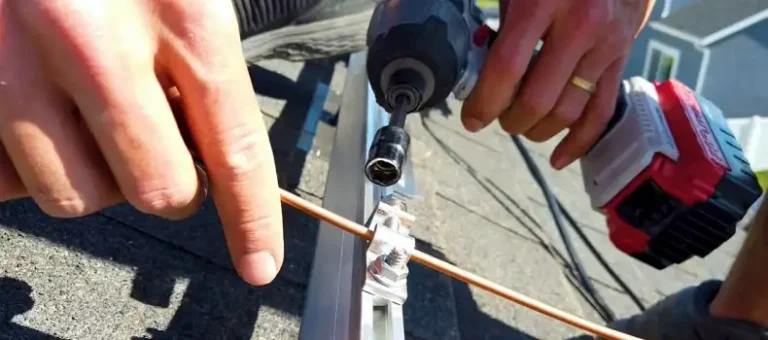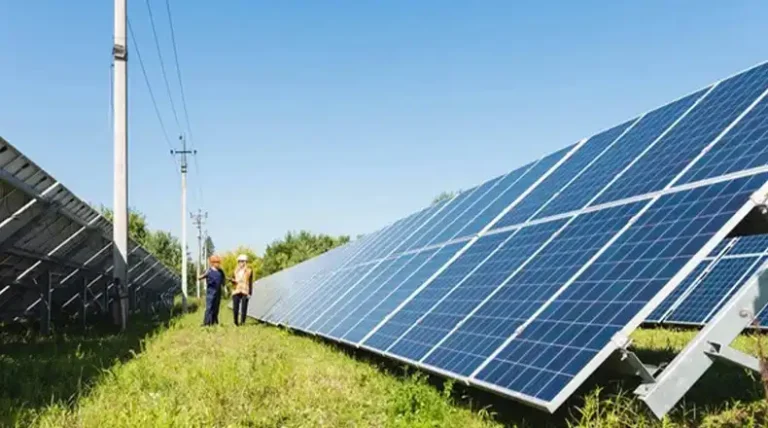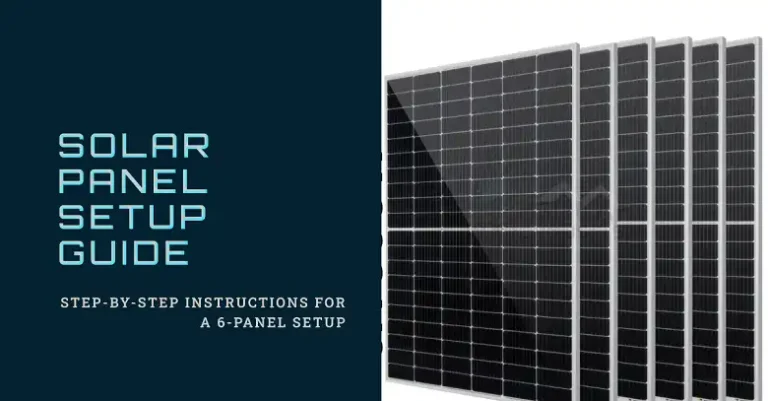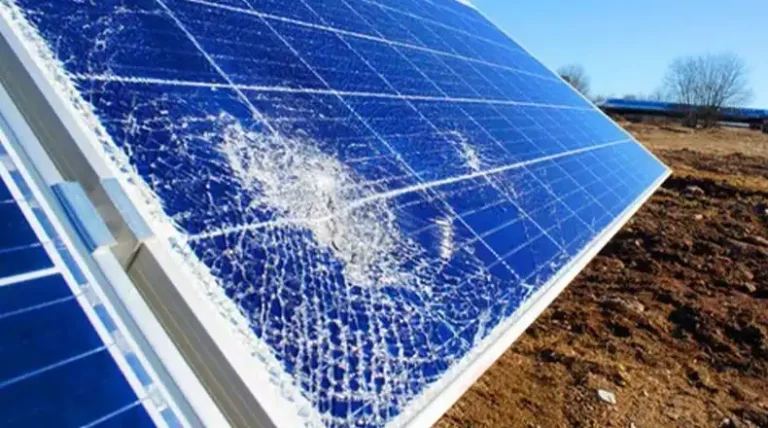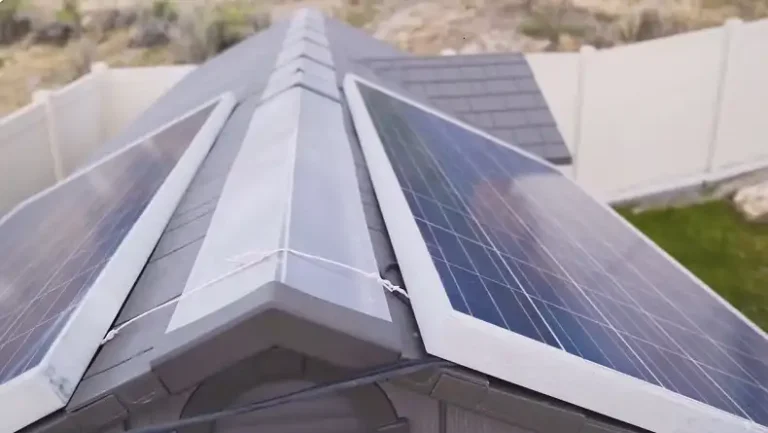Installing Solar Panels with Battery Storage Systems | Explained
Solar energy is revolutionizing how we power our homes, offering a clean and sustainable alternative to traditional electricity sources. This article explores the process of installing solar panels with battery storage systems, providing homeowners with a handy guide to harness the sun’s power effectively.
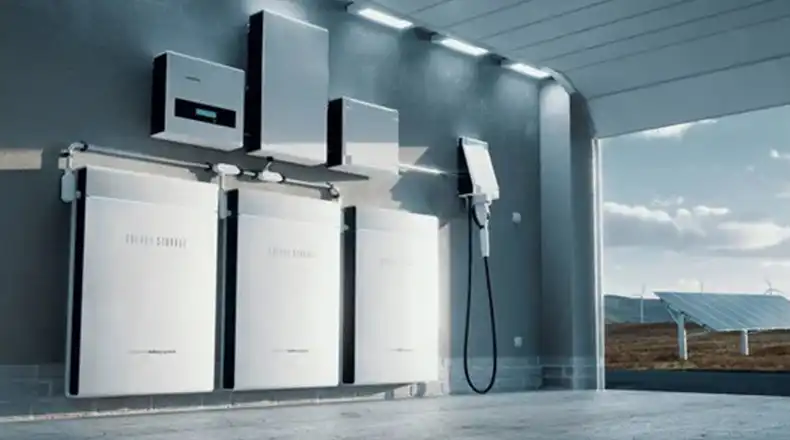
Basic Introduction to Solar Panels and Battery Storage
Solar panels and battery storage systems work in tandem to provide reliable, renewable energy for your home. Here’s the fundamentals of these technologies –
Solar Panels
Solar panels convert sunlight into electricity through photovoltaic cells. These cells contain semiconducting materials, typically silicon, which absorb photons from sunlight and release electrons. This process, known as the photovoltaic effect, generates direct current (DC) electricity.
Types of Solar Panels
Monocrystalline:
- Efficiency: 17-22%
- Cost: $1.00 – $1.50 per watt (highest)
- Lifespan: 25-30 years
Polycrystalline:
- Efficiency: 15-17%
- Cost: $0.90 – $1.20 per watt (moderate)
- Lifespan: 23-27 years
Thin-Film:
- Efficiency: 10-13%
- Cost: $0.70 – $1.00 per watt (lowest)
- Lifespan: 15-20 years
Battery Storage Systems
Battery storage systems capture excess energy produced by solar panels during peak sunlight hours and store it for use during low-production periods or at night. This process helps maximize the use of solar energy and reduces reliance on the grid.
Types of Batteries
| Battery Type | Lifespan (Cycles) | Cost per kWh | Depth of Discharge |
| Lead-Acid | 500-1,000 | $100-$200 | 50% |
| Lithium-Ion | 2,000-5,000 | $300-$500 | 80-90% |
| Flow | 12,000+ | $400-$600 | 100% |
How to Install Solar Panels with Battery Storage Systems?
Before installation, it’s crucial to assess your energy requirements. Start by analyzing past electricity bills to determine average consumption. Review at least 12 months of bills to account for seasonal variations. Calculate your average daily consumption in kilowatt-hours (kWh). Consider future changes in energy usage (e.g., electric vehicle charging, home additions). Use an energy calculator to estimate your daily kWh needs.
Design Your Solar System
After that, you need to design your system –
Step 1: Calculate the number of solar panels required:
Number of panels = (Daily energy need in kWh × 1000) ÷ (Panel wattage × Peak sun hours)
Step 2: Determine battery capacity:
Battery capacity (kWh) = (Daily energy need × Days of autonomy) ÷ (Depth of discharge × Inverter efficiency)
Consider the Permitting and Financing Factors
Check zoning laws, building codes, and homeowners’ association rules. Investigate local utility interconnection requirements and net metering policies. Submit detailed system plans to your local building department. Expect to pay permit fees, typically ranging from $200 to $1000 depending on your location. Finally, choose a financing option according to your preference –
- Solar loans
- Power Purchase Agreements (PPAs)
- Leasing
- Cash purchase
Solar Panel Installation
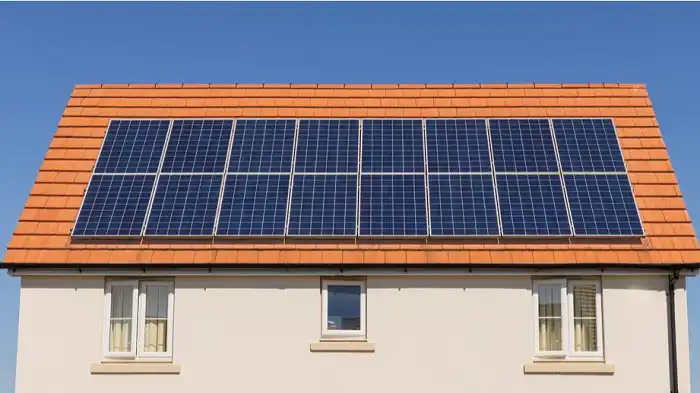
Step 1: Clean the roof surface thoroughly.
Step 2: Replace any damaged shingles or tiles.
Step 3: Install flashings to prevent water intrusion at mounting points.
Step 4: Locate roof rafters and secure mounting brackets.
Step 5: Install rails according to the panel layout plan.
Step 6: Carefully lift panels onto the roof (usually requires 2-3 people).
Step 7: Secure panels to the mounting rails using manufacturer-specified hardware.
Step 8: Connect panels in series or parallel as per the system design.
Step 9: Use UV-resistant solar cables and watertight connectors.
Step 10: Install proper grounding equipment to protect against electrical faults.
Step 11: Mount the inverter in a cool, dry location, typically near the main electrical panel.
Step 12: Ensure proper ventilation to maintain inverter efficiency.
Battery Storage Installation
There are two different ways to connect solar panels and battery storage systems in a home. Those are –
DC-coupled: Higher efficiency, better for new installations.
AC-coupled: Easier to retrofit existing solar systems, more flexible for grid interaction.
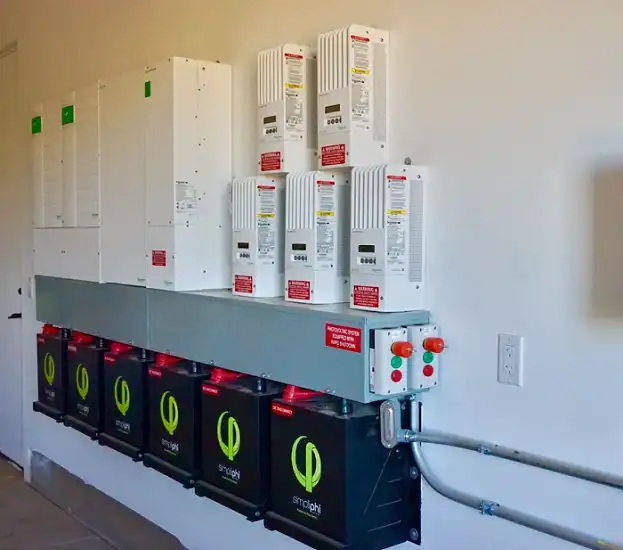
Yet the battery storage installation process can be applied to both systems with battery storage. So, without any further ado, let’s get into the process –
Step 1: Choose a temperature-controlled area (ideally 50-80°F).
Step 2: Ensure proper ventilation and protection from moisture.
Step 3: Consider weight limitations, especially for multi-battery systems.
Step 4: Install a sturdy mounting system capable of supporting the battery weight.
Step 5: Ensure easy access for maintenance and future replacement.
Step 6: Install a dedicated circuit for the battery system.
Step 7: Connect the battery to the solar inverter and the home’s electrical system.
Step 8: Implement safety disconnects and overcurrent protection devices.
Step 9: Install and configure the BMS to monitor battery health and performance.
Step 10: Set up communication between the BMS, inverter, and monitoring systems.
That’s it! That’s how you install solar panels with battery storage systems.
Bottom Line
Installing solar panels with battery storage systems is a significant investment in sustainable living. While the process may seem complex, proper planning and professional assistance can make it seamless. As technology advances and costs decrease, these systems are becoming increasingly accessible, offering homeowners energy independence and substantial long-term savings.
People Also Ask
Can I install solar panels and add battery storage later?
Yes, many solar systems are designed to be “battery-ready.” However, adding storage later may require additional equipment and labor, potentially increasing overall costs compared to installing both simultaneously.
How do solar panels and batteries perform during power outages?
Most grid-tied systems automatically shut off during outages for safety reasons. However, systems with battery storage and special inverters can continue to power essential appliances during grid failures.
What’s the environmental impact of solar panel and battery production?
While manufacturing does have an environmental footprint, the lifetime clean energy production of solar systems typically offsets this impact within 1-4 years. Additionally, many manufacturers now offer recycling programs for end-of-life panels and batteries.

![[Explored] Can You Use Mirrors To Redirect Sunlight On Solar Panels?](https://www.itekenergy.com/wp-content/uploads/2023/08/can-you-use-mirrors-to-redirect-sunlight-768x428.webp)
